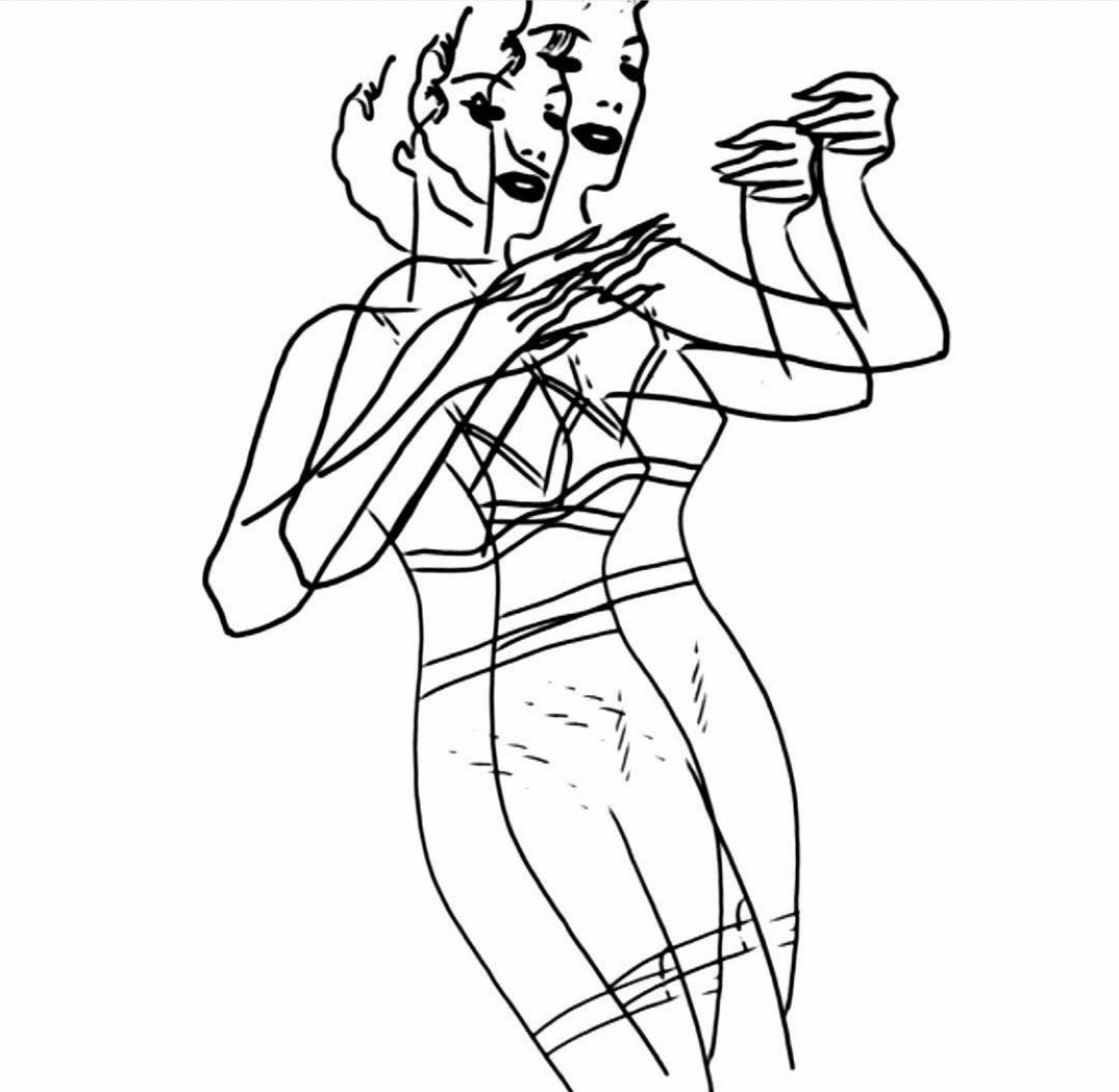
MURMURATIONS, 2022
At the core of this series lies a provocative engagement with repetition—specifically the commodified repetition that has come to dominate contemporary culture. In an age defined by digital images, social media, and mass-produced content, the aesthetic of duplication has emerged as a prevailing style, one that mirrors the consumer culture in which everything is reproduced, replicated, and resold. The act of layering images, copying one over another, reflects the modern reality of commodification, where originality is often overshadowed by the mass consumption of the same images, ideas, and experiences.
By embracing this aesthetic of repetition, the series places a mirror to the current state of art and culture, where the unique is often eclipsed by the ubiquitous. Each piece in the series portrays images that are not simply repeated—they are embedded, mirrored, overlaid, and distorted, in such a way that their repetition becomes the primary point of focus. This manipulation of imagery becomes a metaphor for how the world itself has been transformed by the logic of commodification. Just as an image is copied ad infinitum, the consumption of commodities has become an act of endless repetition, where desires and experiences are recycled, reproduced, and sold back to consumers in increasingly familiar forms.
The series also engages with the concept of fetishism, not just in a psychological sense, but in a cultural and economic one. In capitalist societies, fetishism is no longer restricted to the physical or sexual realm but extends to the very objects we consume. Repetition becomes a tool for creating desire—by repeatedly presenting the same image, we develop a craving for more, even though what we are consuming is essentially the same. This is a form of commodified fetishism: a longing not for novelty or uniqueness, but for the comfort and security of the known. We become attached not to the object or the experience itself, but to its repetition, its unyielding return.
The question “how much is too much?” is central to this critique. At what point does the endless repetition of an image or idea stop being a form of artistic exploration and become a hollow, commercialized gesture? When does the excess of repetition cease to be an aesthetic choice and become a symptom of overconsumption? In a world where everything is designed to be consumed, reproduced, and re-consumed, the act of repetition in this series forces us to confront the limits of desire and the emptiness that comes with an unchecked, commodified cycle.
The narrative embedded within the series asks us to consider the consequences of this excess. It challenges the viewer to reflect on the fine line between pleasure and obsession, between the enjoyment of something and its total appropriation. The series critiques the very nature of our attachment to what is repeated and commodified—whether it’s the endless cycle of advertisements, the saturation of images on social media, or the ever-expanding market of products that promise to fulfill an insatiable desire.
Moreover, the work calls attention to the performative aspect of desire in a society driven by mass production. Just as repetition becomes embedded within the structure of consumption, so too does it define the ways in which we interact with the world. We perform our desires through our consumption of repeated images, buying into the fantasy that repetition offers us stability, meaning, or satisfaction. Yet, this satisfaction is always fleeting, as the act of consuming the same image or object leads to a momentary pleasure, only to be followed by an inevitable craving for more. The cycle is self-perpetuating—our desire is fed by the repetition, but the repetition never truly satisfies.
In this sense, the series is a critique of a culture that not only consumes images but becomes consumed by them. The fetishization of repetition becomes a metaphor for how we engage with everything in our lives—whether it’s the brands we buy, the trends we follow, or the images we consume. Each repetition is a subtle reinforcement of the commodified world we inhabit, where the pursuit of meaning becomes entwined with the act of purchasing, consuming, and endlessly repeating.
Ultimately, the series challenges the viewer to reflect on the point at which repetition becomes not an aesthetic choice but a cultural and psychological condition. By laying bare the commodification of repetition, it forces us to confront the deeper question of whether our desires are truly our own or whether they are shaped by the relentless, fetishistic cycles of consumption that dominate our lives.
